For thousands of years, meditation has been used as a way to disconnect from the outside world and tune in to yourself, lower stress levels and find rest in the evening. And while this all sounds great and dandy, the biggest hurdle to a meditation practice is getting started.
The good news is that anyone — and yes, we mean anyone — can meditate. Like other rituals and skills in life, it takes preparation and practice and testing out a few methods to see which one resonates with your mental state the best.
Here, we spoke with meditation experts about creating a meditation ritual, reaping the benefits and of course, the essential products to invest in. Consider this your 101 guide to meditation.
What is meditation?
Meditation stems from the Latin word meditatus or mederi, meaning to remedy. Or if you want to take the official Merriam-Webster description, “To meditate is to spend time in quiet thought; to engage in contemplation or reflection or mental exercise for the purpose of reaching a heightened level of awareness.”
To put it simply, meditation is a time when you choose to be still in your own experience, to access expanded awareness and presence, according to Rachel Petri, a yoga and meditation teacher and the founder of Space to Breathe. “Meditation can be three breaths or 30 minutes. It can be absolute stillness, or focus on your breath, or presence to each movement you make,” she continues. “It is varied, but it is always the exercise of full presence to the moment, to be fully with yourself and the full spectrum of your experience.”
In other words, meditation is a time you give yourself to disconnect from everything around you and turn inwards to find your breath, a sense of calmness and hopefully, enlightenment.
What are the benefits of meditation?
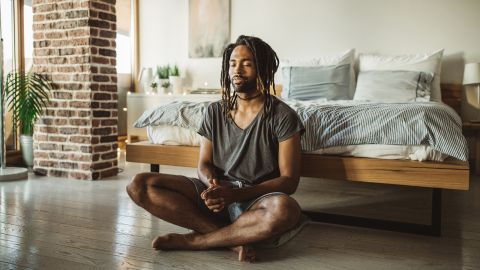
Considering meditation is an ancient practice that’s utilized across the globe, it’s no surprise it comes with many benefits. Not only does a regular meditation ritual positively impact our minds, but it can help our bodies too. Here, a few of the most well-researched and documented benefits you can expect from tapping into meditation.
Increases self-awareness
Rather than thinking about the past or worrying about the future, meditation forces you to be fully in the present moment. “It not only shows us how to be more aware of our surroundings, but also of all the intricacies within ourselves,” says Kama Hagar, a holistic wellness and meditation coach. “Don’t be surprised if you find yourself noticing unconscious habits, patterns or unhelpful ways of thinking.”
Improves internal functions
On a physical level, meditation helps lower blood pressure and cholesterol; strengthens the immune system; enhances longer, better-quality sleep; promotes faster healing; increases blood flow and reduces pain, explains Lisette Cifaldi, the director of behavioral health for Hilton Head Health.
Provides stress release and promotes joy
Hagar explains when we meditate, we experience the opposite of fight-or-flight, the body’s stress response. “Instead, our breathing and heart rate slows, our stress hormones decrease in production, and even our platelets become less sticky, causing it to flow more easily throughout our entire body,” she says.
Plus, Cifaldi says meditation improves emotional awareness and reduces feelings of depression, anxiety, anger and confusion. “It’s also a practice that increases positive emotions such as serenity, peace and calm,” she adds.
Enhances creativity
Can’t seem to get through a workday without blankly staring at your computer screen? You don’t need a coffee break — you need a meditation break. Another benefit of meditation is that it enhances and inspires creativity while boosting productivity, says Linda Lauren, an avid meditator and a fifth-generation psychic medium. “It can help in problem-solving because it teaches us to not react to things, and that makes us better able to get along with ourselves and others,” she explains.
How to meditate properly
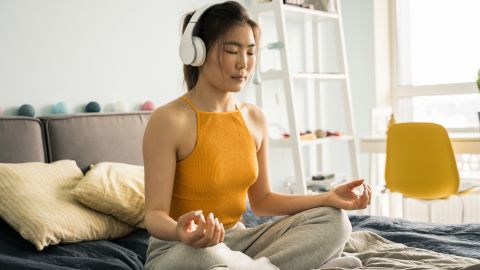
According to Martha Lockie, the co-creator of IntoMeSea and an avid meditator for 42 years, it’s best to keep meditation as simple as possible in the beginning. The goal is to get comfortable settling into your body and mind to allow yourself to benefit from meditation. Here, Lockie provides an easy step-by-step guide.
- First, find a quiet place in the home. Turn off your phone (if you’re not using a guided meditation app) and ensure you won’t be disturbed by pets or other houseguests.
- Next, get comfortable. Lockie says the best position is in a chair with your back straight and your feet on the floor. This can be with a meditation pillow or chair.
- Then, gather everything you need for your meditation sanctuary. This could anything from crystals and blankets to a candle, a journal, etc. (More on this below!) These items create the ritual associated with establishing a meditation practice and everything that goes along with it.
- Now, begin breathing in a slow, deep fashion. With each exhale, feel your body sinking down with gravity. Put your attention at the back of your head, above your ears and well behind your eyes. Go back further than you think you should. Create a personal space here; make it your own.
- Next, place your attention at the bottom of your feet. As you breathe in, feel yourself pulling energy up from the center of the earth. Feel warm, slow earth energy traveling up your feet and legs to your hips on each inhale. Repeat this over and over. This is what is known as grounding, and is the foundation for any lasting meditation practice.
- Now, focus on a circle around your physical body. Lockie suggests imagining it two feet above, below, to the left and the right. See and feel it anchored and connected to the center of the Earth, however that looks to you. There is no right or wrong way.
- Return again to placing your attention in your meditation sanctuary. Focus again on the bottom of your feet, being grounded and on the exhale, reestablish the anchor you intuited dropping back into the center of the Earth.
- Breathe and repeat the process. Watch what comes up for you. Lockie says that trying to ‘empty the mind’ is a non-attainable feat and breeds frustration. Instead, stay in the back of the head, ground with the feet flat on the floor and continue to anchor and visualize.
What are the types of meditation?
There are countless types of meditation — from breathwork and visualization to walking meditation and many others. This is one of the most important things to remember about getting into the art of meditation: If one method doesn’t click for you, try another. Here, experts outline a few of the most widely practiced.
- Breathwork: In this, Cifaldi says we use the breath as an anchoring point by concentrating on its rhythm. As we become aware of the sound and sensation of the breath, as well as the rise and fall of our chest and belly, we move our awareness away from our thoughts.
- Guided meditation: In this method, you use your imagination to picture a scenario that a narrator describes. Cifaldi says an example would be picturing a walk on the beach that a narrator leads you through while asking you to imagine using your senses to along the walk.
- Vipassana meditation: This is the meditation that Buddha was practicing as he sat underneath the Bodhi Tree, Lockie says. In Vipassana, the meditator begins by placing their attention at the top of the head and moving it down the shoulders, arms, chest, torso, buttocks, legs and then out through the bottom of the feet.
- Transcendental meditation: Developed by Maharishi Mahesh Yogi in the 1960s, this is the practice of sitting comfortably with closed eyes and repeating a mantra given by a certified TM facilitator for 20 minutes twice a day.
- Walking meditation: Author and entrepreneur Adora Winquist says movement is critical to our overall health and well-being, making ‘walking meditation’ more popular. Walking in the woods or on the beach in silence and solitude is a time-honored meditation practice that can easily suit a busy schedule.
- Ho’oponopono meditation: License marriage and family therapist Amber Trueblood says this is a “clearing” meditation that many find deeply relaxing and rejuvenating. Sit in a quiet location with minimal distractions. Then, repeat the four short phrases, ‘I love you. I’m sorry. Please forgive me. Thank you.’ Relax your shoulders and repeat the phrases for ten cycles at the end of your day.
- Trataka meditation: This is a great technique for those who have a hard time closing their eyes while meditating and want to practice on their own, says Vibay Chandran, managing technical program management for Mindbody. In this, you choose an object that makes you feel calm for their meditation practice. Then, sit down to meditate, grow aware of your breath and stare at the object without blinking your eyelids. Hold this state for as long as you can. Then, close your eyes, visualize the object, and think about its qualities while staying aware of your breath.
Does meditation work?
Those who swear by meditation will say, yes, it works. But those who dabble here and there may not truly realize the lasting impact on their psyche. That’s why if you want to get serious about meditation, you need to commit, says Susan Labunski, a holistic nutritionist and meditation teacher at The Park.
“Even if it’s for just one minute a day, it’s still considered meditation and will help clear your mind and relax,” she says. “Use an app with guided meditations. It is much easier to follow along with someone or something, rather than to try it alone, especially in the beginning or if you’re new to meditation.”
What is the best time to meditate?
While most practitioners will choose to meditate to start or end the day, truly, the best time to meditate is whatever time you can block out on your calendar that can assure you at least 10 to 20 minutes of privacy, Lauren says. Over time, you should integrate your daily meditation into your routine twice a day for the most benefit.
“Remind yourself that this is your time — ‘me’ time — and special to your mental health as it will relax you,” Lauren continues. “Twice a day, starting with 10 minutes and gradually going up to 20 minutes. Once in the morning to open your day and ground you. Once in the evening to unload yourself of the day’s trials and tribulations so that you can sleep well.”
What you may need to meditate

Crystals
Lauren’s top recommendation for outfitting your meditation sanctuary is to invest in quality crystals because they tap into our energy and feelings. “Crystals hold a vibration, and that vibration is what attunes us to our higher self and our deepest thoughts,” she says. Remember, each crystal has meaning, so choose wisely based on what you need the most help processing. This pack from Baloo Living includes an eye mask and your choice of one of four stones:
Meditation apps
For newbies especially, meditation apps guide your practice as you listen to experts give suggestions, create visualizations and instruct you to breathe. There are a wide variety of apps available, and here, experts name their favorites.
- Unplug Meditation: This subscription app features high-quality meditation videos for all levels and intentions. Hagar says the teachers are diverse, accredited and clear. This studio specializes in non-secular meditation, so if the ‘woo-woo’ or spiritual side of the practice turns you off, this is your safe space to just tune in and chill.
- Insight Timer: This is a great app for meditation beginners and otherwise. There are also techniques for sleep and relaxation, says Amy Opielowski, a senior CorePower Yoga instructor.
- Chopra: Opielowski loves this app for guided meditations. She says there’s a wonderful variety of phrases and other exercises to ground you throughout the day.
- Calm: When certified yoga instructor for Mindbody Denise Prichard can’t get to a meditation class, she uses this app because it has a bevy of guided meditations to help with anything from kickstarting your day to dealing with anxiety to helping you fall asleep at night. They also have celebrity meditations to help you combat stress and insomnia, like ‘Dream with Me’ meditation with Harry Styles.
Samaya Wheat Deluxe Round Cushion
$149 at Samaya

When you find your comfortable seated position, you may need a little extra support to ensure you have a tall spine. This isn’t just ideal for meditation, it also helps protect your lower back. Petri recommends meditation pillows from Samaya, but says any big comfy pillow will do just fine.
Hatch Restore Smart Light
$167 at Amazon
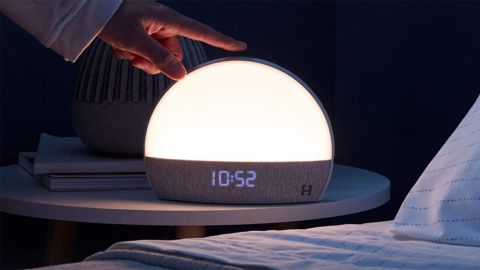
If you want to skip a guided meditation with an app and try focusing on your breath alone, you’ll need a timer to hold your focus. (You know, instead of worrying about that email sitting in your inbox.) Lauren recommends a timer with soft bells or chimes to help you stay honest about your meditation time. “It also encourages you to have a beginning, a middle and an end to your session,” she adds.
This alarm clock from Hatch Restore can take your meditation practice to the next level with your choice of soothing sounds and alarms, as well as ambient lighting.
JBL Clip 3 Portable Bluetooth Speaker
$49.95 $40.28 at Amazon
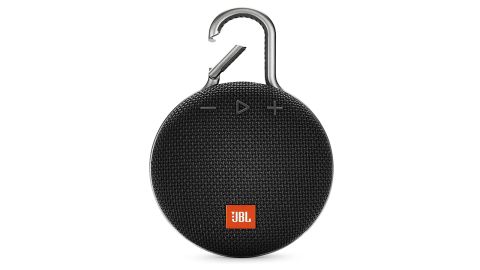
While music is not a must, Lauren says it can definitely set the tone for your meditation session. However, steer clear of songs with lyrics and choose instrumentals that make you feel calm and collected. To create your meditation oasis, find a small speaker that you only use for your daily practice. This small Bluetooth option comes highly rated and even cancels out unnecessary fuzz for a clear, crisp sound. Plus, it’s waterproof if you decide to meditate in the bath.
TheCollectiveChester Nordic Vegan Sheepskin Rug
$63.74 at Etsy

While Petri says it’s not exactly essential, having a sheepskin rug — faux or sustainably sourced — has become a staple in her meditation nook. Wherever she is, when she lays down a sheepskin, it signals to herself that it is her sacred space. Not to mention, it makes for a cozy space for your tush!
CatherineDesignNYC 108 Beads Healing Mala Necklace
$20.90 at Etsy

Sometimes when you’re meditating with a mantra, you may want a way to keep your energy focused. Japamala beads help. As Lockie explains, these are 108 Indian prayer beads strung on sandalwood, rudraksha or bone of the same size and a tassel.
“You hold the beads in your hands during meditation as you touch the first bead next to the tassel while repeating the mantra and then move to the second bead and repeating the mantra,” she says. “When you get back to the tassel or the larger bead, you have come a full round. This is an excellent way to cultivate mindfulness!”
Everlasting Comfort Essential Oil Diffuser
$46.95 $38.95 at Amazon
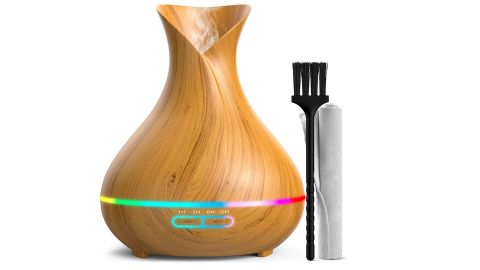
Since all of our senses can tie into our emotional and mental health, using an essential oil diffuser can be another way to relax. As Winquist says, pure essential oils are a potent form of plant medicine. So, when we are feeling overwhelmed, anxious, down or disconnected, we can create new habit patterns of using essential oils to uplift our emotions and re-pattern our neural pathways for a healthier way of being, feeling and living.
UnHide Marshmallow Blanket
$195 at Unhide

Trueblood recommends finding your favorite cozy blanket and relabeling it as your meditation blanket. Then, every time you see it on the sofa or bed, you’ll remember to meditate. “When you meditate, use it to associate with the calm and quiet you create, and you’ll be able to slide into that mode more quickly each time you do it,” she says.
Lululemon The Reversible Mat 5mm
$88 at Lululemon
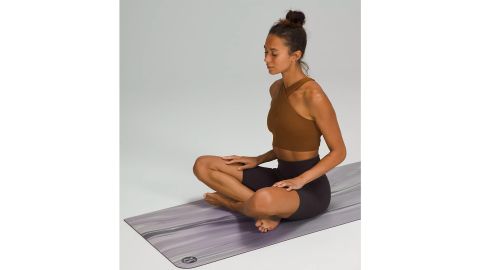
Prichard says a quality yoga mat can be your best friend whether you plan to meditate while sitting still or you’re interested in movement meditation. “For movement meditation, you’ll need a comfortable and sturdy yoga mat to help support your sequences and keep your practice safe,” she says. We named this thin mat the best yoga mat of the year.
Ostrichpillow Self-Care Journal
$35 at Ostrichpillow
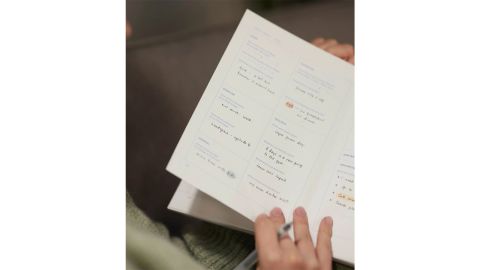
You may discover new things about yourself, release old thoughts or even come up with brilliant ideas while meditating, which is why Lauren recommends finding a journal that you only use for your meditation sessions. “A journal is a great way to keep track of your progress and to see what may be benefiting you and what may not be useful,” she continues. “Keeping a journal will help you to be grounded and help with recall when you want to refer to a specific meditation and/or date.”
If you prefer prompts for your writing, try this self-care journal. It includes not only a space for your reflections and intentions but also a tracker for exercise, sleep, nutrition and more.
HomeRemediesStore Way to Yourself Journal
$15.95 at Etsy
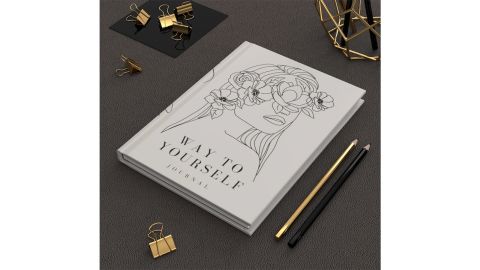
For those who prefer a blank page, this hardcover journal gives you ample space to scribble it all down.
Mindful Modern Folding Adjustable Pro Meditation Chair
$199.99 at Amazon
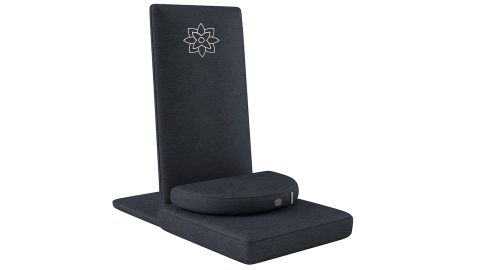
Rather than sitting on the floor, do you prefer to sit in a chair? If so, don’t force yourself to get to the ground if you won’t stay put. As Lockie says, you won’t sit for longer than a few minutes if you aren’t comfortable. Mindful Modern offers several meditation chair options — from ones you can always leave standing in your home to others that fold and go for travel. Make sure to find one that gives you adequate back and bottom support so you can sit without stress for 10 to 20 minutes.
YoungGemStone Copper Spheres
$9.95 at Etsy

Lockie says holding a copper ball in each hand is another great way to maintain a grounded field during meditation. “In addition to grounding, copper helps relax joints and muscles, promotes better sleep, enhances memory and intelligence, lowers inflammation and improves blood circulation,” she explains.
Lotus Weighted Lavender Eye Pillow
$21.95 at Amazon
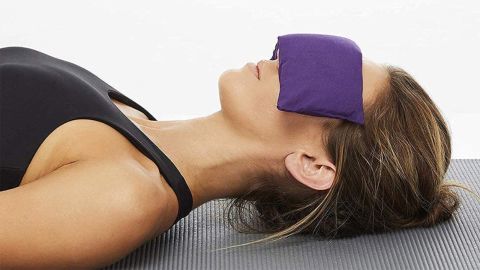
Liam Gillen, a yoga nidra instructor at The Ritz-Carlton, Amelia Island, recommends finding a soothing eye pillow for your practice. Particularly if you’d like to lay down while meditating, it can rest over your eyes to block out distractions or stimulations. He recommends finding a small pouch made of soft fabric filled with flax seed and scented lavender for ultimate benefit.
Apple AirPods Pro
$249 $174.98 at Amazon

As Prichard puts it, there’s nothing more frustrating than finally falling into a deep meditation only to be abruptly brought out of that bliss from the wailing of a fire truck siren. “But even if you live in the middle of nowhere, something as small as your AC unit kicking on or your dog barking can cause an unwanted distraction,” she says. That’s why investing in a pair of noise-canceling headphones can help you fully be in the moment.
Source: www.cnn.com


